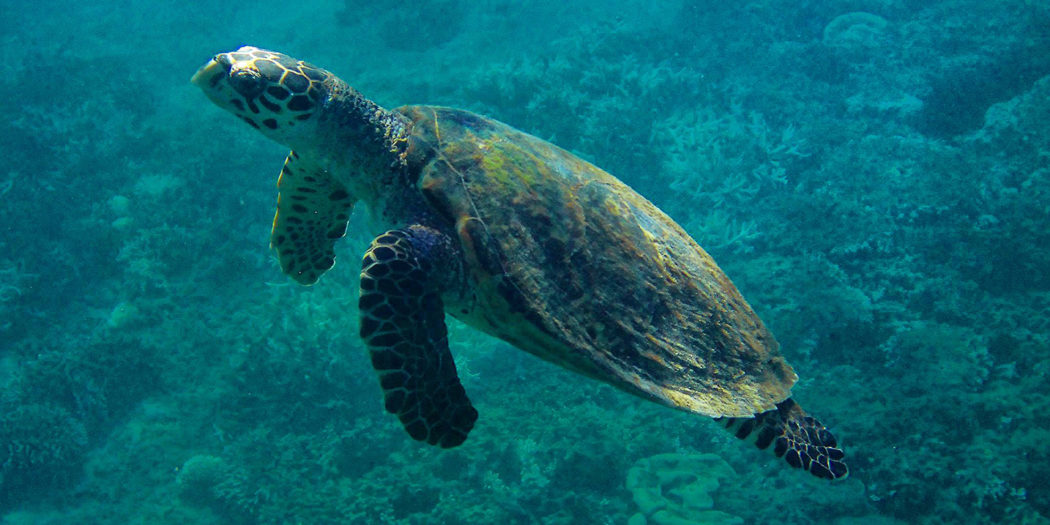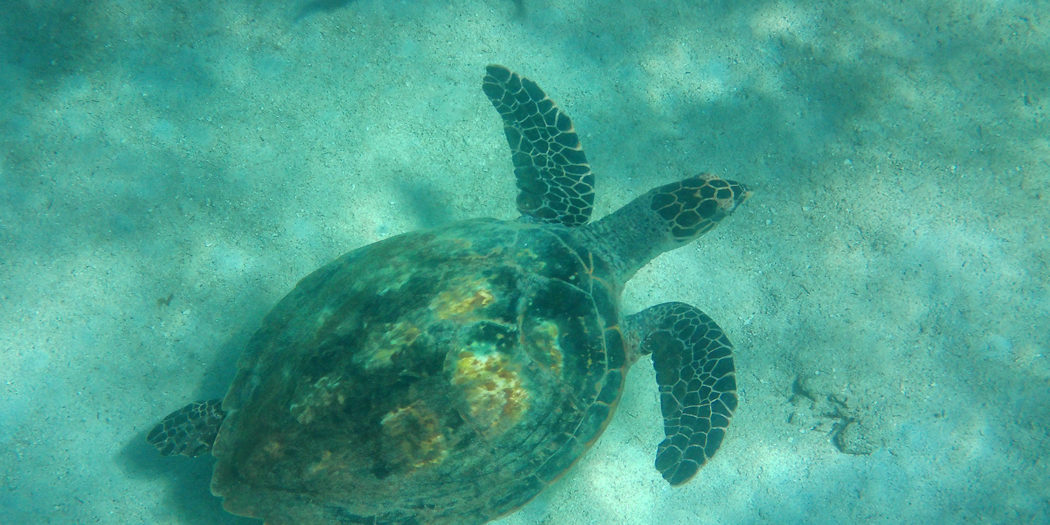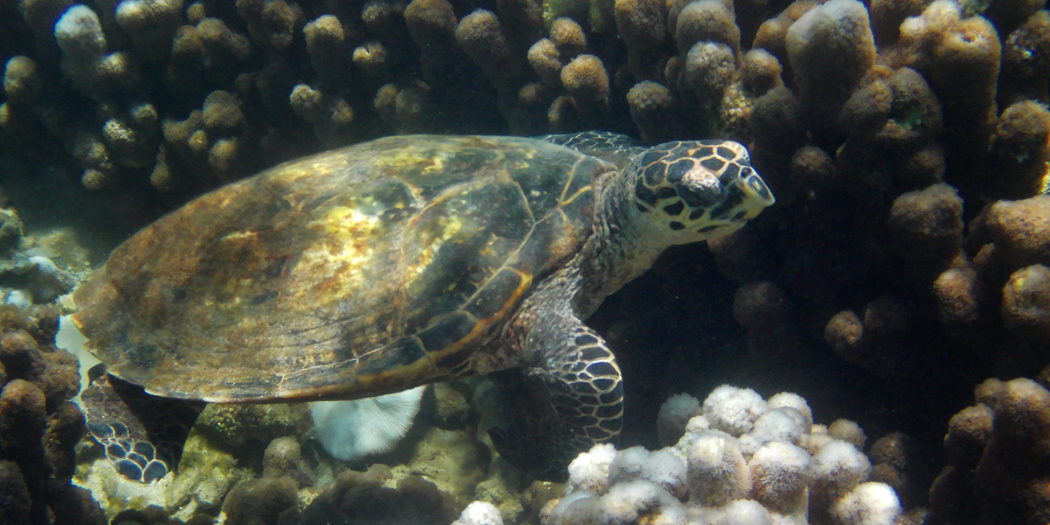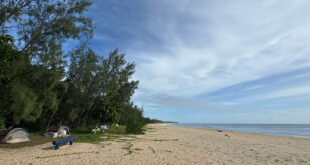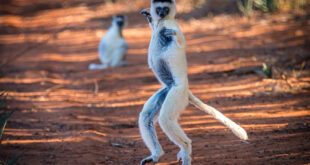Once hunted for their tortoiseshell, now threatened with extinction
Five species of sea turtles are found around Madagascar’s coasts and islands. One of the best known is probably the hawksbill turtle, Eretmochelys imbricata. It is most famous for its tortoiseshell, French caret, a term from the French Antilles. It refers to both the animal itself and the valuable tortoiseshell obtained from the shell of the hawksbill turtle. Only the thin, beautifully grained layer of horn-like material on the bony shell of the turtle can be processed as tortoiseshell. This means that even a large hawksbill turtle weighing 75 kilograms and with a shell length of up to 115 centimetres will yield just two and a half kilograms of tortoiseshell.
Tortoiseshell was used en masse, especially in the 19th and the first half of the 20th centuries, to make jewellery such as earrings and bangles, belt buckles, bags, and other accessories. A not insignificant part came from the coastal regions of Madagascar. Thousands of hawksbill turtles lost their lives every year. It was not until the Washington Convention on International Trade in Endangered Species of Wild Fauna and Flora that the trade in hawksbill was banned internationally in the 1970s.
The population of hawksbill turtles has declined by more than 80% in the last hundred years alone. Today, the hawksbill turtle is critically endangered. Madagascar is considered one of their last refuges.
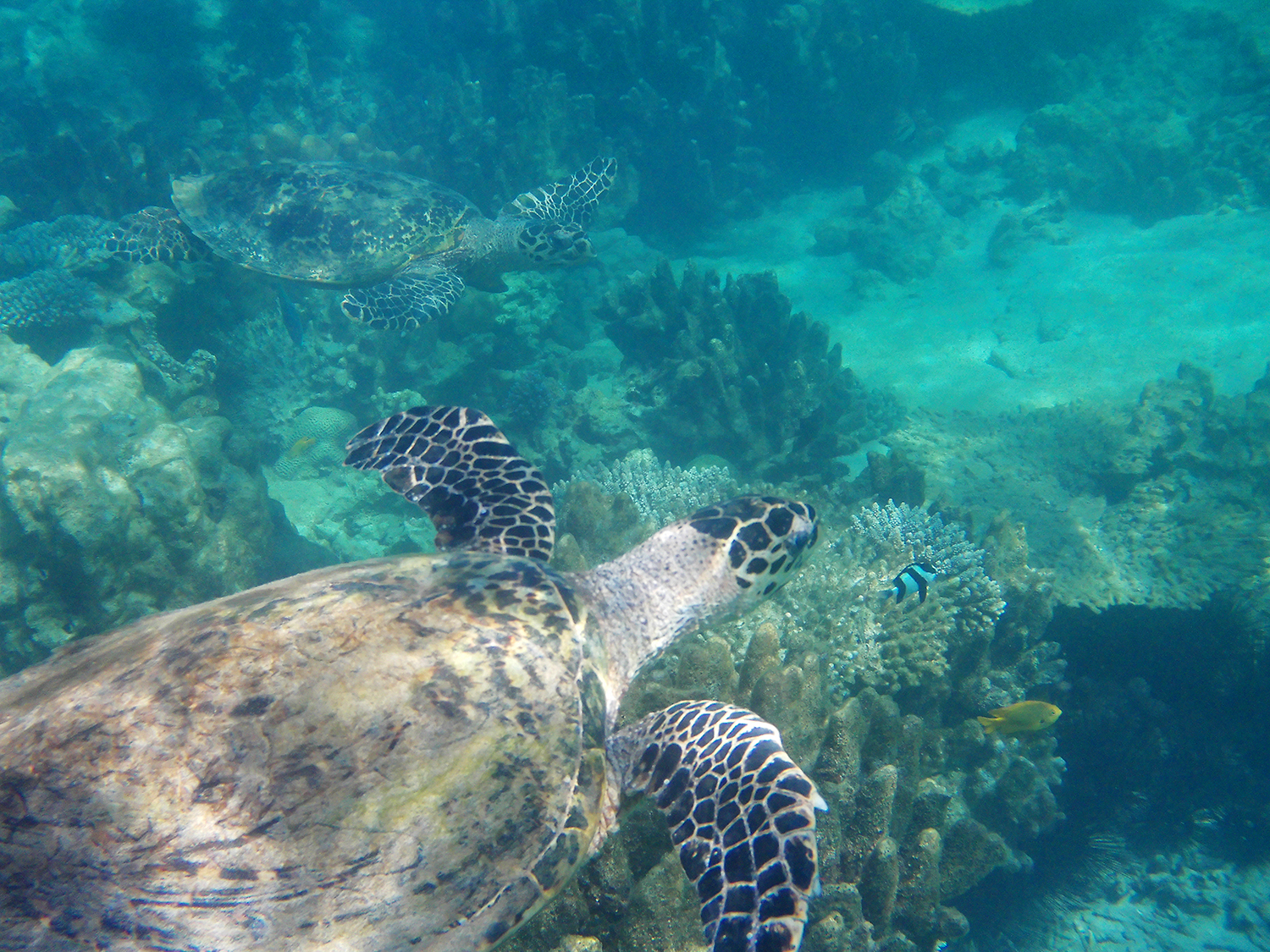
The Sakalava call them fanohara, mother of pearl turtle
Madagascar, with its location in the Indian Ocean and constantly warm water temperatures, is one of the preferred habitats of hawksbill turtles. The subspecies that lives here is called Eretmochelys imbricata bissa. It is found all around Madagascar, though preferred at the northernmost tip of Madagascar as well as in the southwest. In the north among the Sakalava and in the southwest among the Vezo it is called fanohara, the mother-of-pearl turtle, and among the southwestern Sakalava fanohaty. The Antanosy tribe call the hawksbill turtle fanotanga.
It is estimated that hawksbill turtles reach sexual maturity at four to five years of age. When mating, the smaller male clings to the dorsal carapace of the larger female. In this way, it allows itself to be carried through the sea for hours until it disengages from its mate when the job is done.
Only one among a thousand hatchlings survives
Every two or three years, the females return to the beach where they hatched. In Madagascar, these beaches are located mainly in the extreme north between the islands near Nosy Be, Antsiranana, and Vohémar, also in the west off Morondava and Maintirano, and in the southwest near Anakao. The offshore islands of Nosy Ve, Nosy Sakatia, Nosy Iranja, and the Nosy Hara archipelago are places where the turtles are expected every year. In the morning, at sunrise, they come to the white sandy beach. With great effort, they drag themselves to the slightly higher nesting sites to dig a hole and lay their eggs in it. Then they push the sand together with their flippers over it. Before the sun reaches its peak, the hawksbills disappear back into the sea. In a laying season, each female turtle may lay eggs every two weeks, up to four clutches. The peak season for egg-laying and hatching is between October and March, during the Malagasy rainy season. Most nestings occur in December and January.
A single nest protects up to 177 eggs from the same female. After eight weeks, the little sea turtles hatch on the white sand beaches – a spectacle that attracts curious onlookers, but also egg thieves and predators. If the baby turtles look for the strength-sapping way into the sea, seagulls are already waiting in the sky, and sharks as well as other predatory fish in the sea for a small snack. The baby turtles all hatch at the same time – the higher the chances for the single baby to make its way into the sea. But the first hours, days, and weeks of a hawksbill turtle are tough. Only one out of 1000 baby turtles survive.
The favourite food are sponges
Juvenile hawksbill sea turtles stay mainly in the shelter of floating algae. Unlike other young sea turtles, they rarely venture into the depths of the ocean. As they approach sexual maturity, the young turtles return to their ancestral coral reefs. In the past, scientists thought that hawksbill turtles hardly ever moved outside their reef, but today it is considered proven that especially adult females continue to migrate after laying their eggs and searching for foreign feeding grounds. Nevertheless, they prefer coastal areas.

In the coral gardens of Nosy Tanikely, Nosy Sakatia, and Nosy Hara you can watch the adult turtles searching for their favourite food. They use their hooked beaks to pull out horny sponges from between the corals. In some populations, sponges make up over 90% of the diet of hawksbill turtles. This type of diet is called spongivorous. However, most populations feed more omnivorously and also eat soft corals, disc and crustose anemones, sea squirts, ribbed jellyfish, and cnidarians. Less commonly, hawksbill turtles supplement their daily menu with small amounts of brown algae.
The protection of sea turtles is just beginning
First conservation efforts in Madagascar: It is now forbidden on the whole island to take hawksbill turtles from nature, no matter for what purpose. In addition, several marine protected areas have been created, including around the egg-laying areas of Nosy Sakatia, Nosy Hara, and Nosy Tanikely. Around the archipelago of Nosy Hara, studies are being conducted with transmitters that document turtle migrations. Elsewhere, fishnets with escape devices for sea turtles (so-called turtle excluder devices, TED) are already the order of the day, around Madagascar the development is still a bit slower. And also compliance with the existing protected areas and fishing bans is still a problem.
The hawksbill turtle is considered fady (taboo) by some tribes, such as the Sakalava, and is therefore not eaten. However, the Vezo and Antanosy tribes do not know this fady. In general, the hawksbill turtle is less hunted for meat than other sea turtles. It is more likely to end up as a bycatch in the hunt for sea cucumbers and sharks in the jarifas, special nets. Also as an illegal souvenir, you can still find hawksbill shells, stuffed turtles, and processed tortoiseshell here and there.
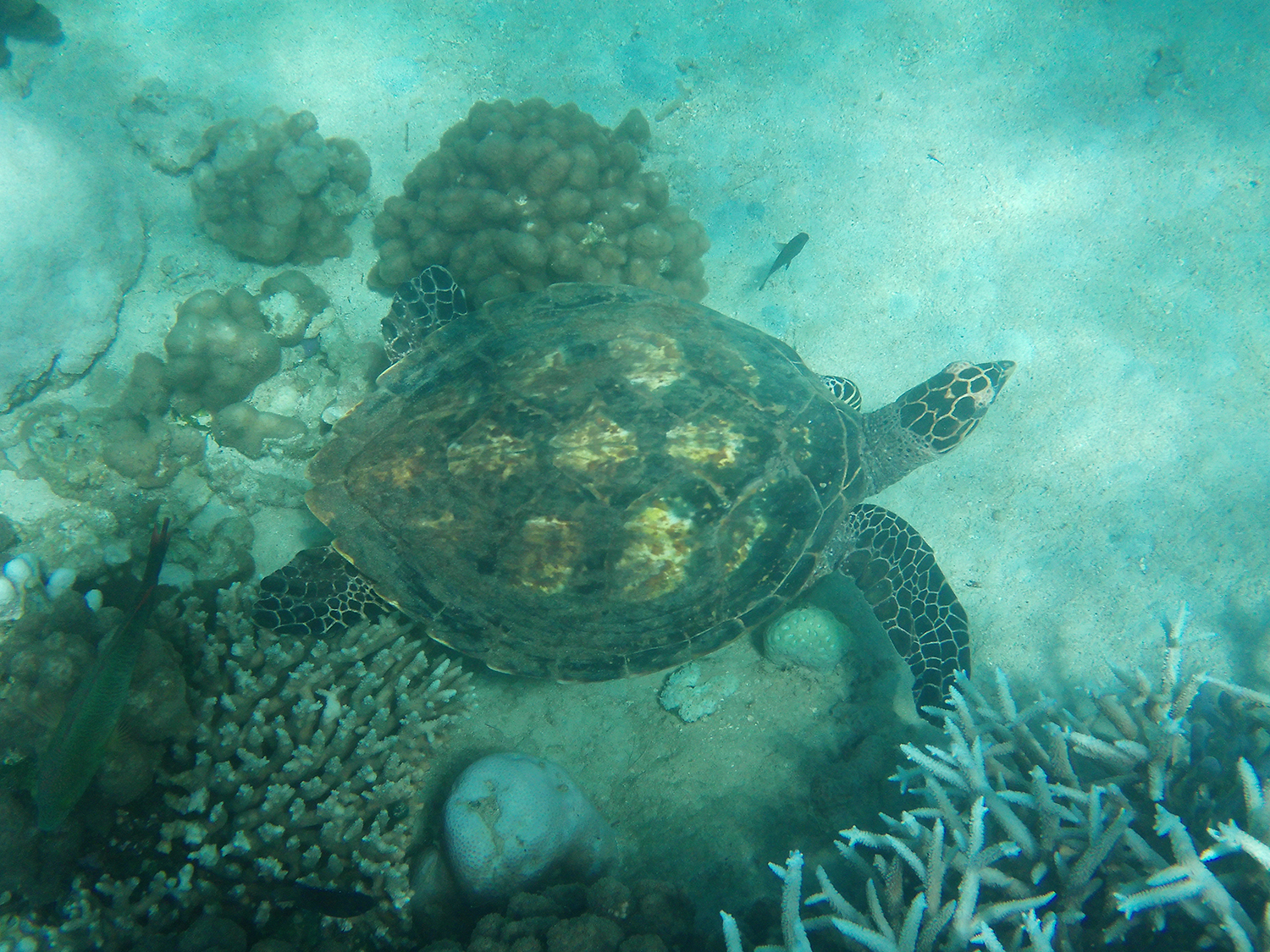
Madagascar is a hot spot for hawksbill turtles
If you want to experience these beautiful sea creatures living in the wild, you have the opportunity to do so in the northwest of Madagascar on the islands of Nosy Sakatia and Nosy Tanikely. There are guided snorkelling excursions with hawksbill turtles all year round.
By the way, this species can be easily distinguished from the green sea turtles, which are also found here: In the hawksbill turtle, the horn plates of the dorsal carapace overlap each other, whereas in the green sea turtle they do not. Also, hawksbill sea turtles bear two claws on each front flipper. The edges of the dorsal carapace are also serrated, which distinguishes them well from other sea turtles. Only with age do these serrations become fewer, and they can then only be seen in the posterior region. Hawksbill turtles can live up to 40 years – plenty of time to get to know these beautiful sea creatures on Madagascar!
 MADAMAGAZINE Your Magazine about Madagascar
MADAMAGAZINE Your Magazine about Madagascar
